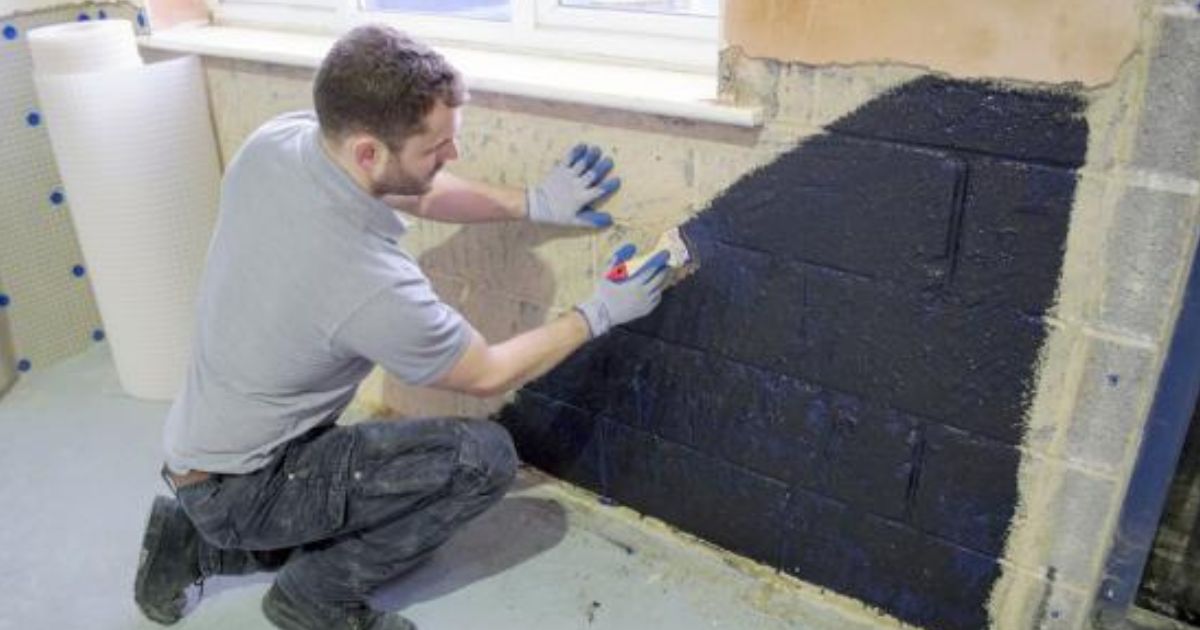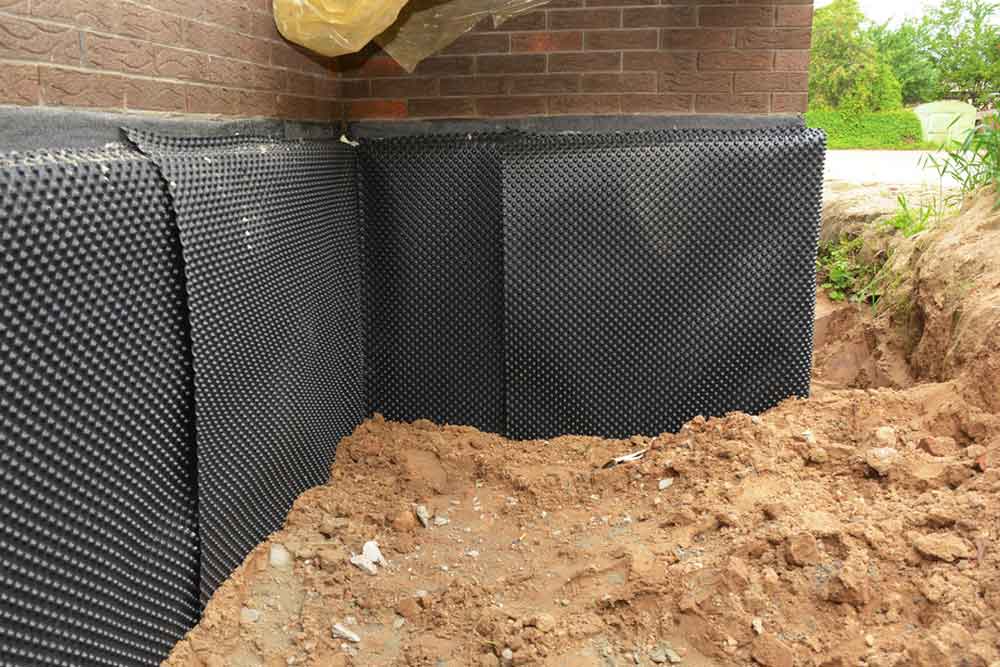Key differences rising vs. penetrating damp explained by a damp specialist newcastle
Key differences rising vs. penetrating damp explained by a damp specialist newcastle
Blog Article
Understanding the Significance of Damp Proofing in Preventing Structural Damages
Wet proofing serves as an essential defense against wetness seepage in structures. This protective action can avoid substantial architectural damage, yet several property owners remain not aware of its value. Recognizing the indicators of wetness and comprehending the various options available can be vital. However, ignoring wet proofing can result in serious repercussions. What are the particular dangers and remedies that residential or commercial property proprietors should think about?
What Perspires Proofing and Just How Does It Work?
Wet proofing serves as an essential obstacle versus wetness invasion in structures. mould treatment newcastle. This process entails using specific materials and techniques to stop water from permeating wall surfaces, floorings, and various other structural elements. Normally, damp proofing can be attained via the setup of moist evidence membrane layers, coatings, or using specialized sealants.These methods function by creating a safety layer that hinders wetness motion, ensuring that the interior atmosphere remains healthy and completely dry. Moist proofing is specifically crucial in locations susceptible to high humidity or groundwater, as it assists maintain the integrity of the structure over time.Moreover, reliable damp proofing adds to energy effectiveness by preventing warm loss connected with moist settings. By resolving possible dampness concerns prior to they intensify, damp proofing works as a positive measure in safeguarding buildings from the damaging results of water damages, eventually lengthening their lifespan and maintaining their value
Common Indications of Dampness in a Building
Dampness problems within a building can show up with a number of visible indicators that show the visibility of moisture. One prominent indication is the appearance of water stains on wall surfaces or ceilings, which commonly shows wetness seepage. Furthermore, bubbling or peeling off paint can recommend that excess moisture is trapped below the surface area, resulting in deterioration. One more common sign is the presence of mold and mildew, which flourish in wet conditions and can often be identified by their stuffy smell. Additionally, a rise in humidity degrees can cause condensation on windows and other surface areas, highlighting dampness troubles. Warped or unequal floor covering might signify underlying dampness that jeopardizes architectural integrity. Acknowledging these indicators early can assist minimize prospective damages and keep a risk-free living setting. Normal evaluations and timely action are essential in dealing with moisture concerns before they intensify.
The Risks of Overlooking Damp Proofing
Neglecting damp proofing can result in considerable hazards to a structure's structural honesty, as moisture accumulation may damage foundations and walls. Additionally, prolonged dampness produces an atmosphere for mold and mildew development, presenting major carcinogen to occupants. Attending to these threats is vital for making sure both safety and longevity of the property.
Structural Honesty Threats
When property owners forget the significance of efficient damp proofing, they subject their buildings to substantial structural honesty threats. Extended wetness infiltration can cause the growth of mold and mildew, which damages fundamental elements and can jeopardize total security. Furthermore, excess wetness can wear down concrete and brickwork, resulting in cracks and structural failings. Timber parts are specifically vulnerable; they can rot and shed load-bearing capacity, posing significant threats to the building's framework. Neglected moist conditions might draw in bugs, such as termites, which better exacerbate architectural damage. Inevitably, neglecting wet proofing steps can result in costly repair work and prospective safety and security hazards, underscoring the important function of aggressive moist administration in protecting the integrity of properties.
Wellness Danger Worries
Exactly how can an apparently small oversight result in major wellness dangers? Overlooking moist proofing can create an environment for mold and mildew growth, which positions significant health dangers. Mold spores can set off allergies, breathing problems, and various other health and wellness problems, especially in susceptible populaces such as kids, the senior, and individuals with pre-existing conditions. Additionally, persistent dampness can bring in parasites like bugs and rats, which lug diseases that better compromise wellness. The presence of dampness additionally adds to a decrease in indoor air top quality, aggravating asthma and various other breathing conditions. The failing to deal with damp concerns not only intimidates architectural stability but likewise jeopardizes the health of owners, highlighting the important requirement for reliable moist proofing actions.
Different Types of Damp Proofing Solutions
Although numerous elements can add to damp issues in structures, choosing the appropriate moist proofing option is necessary for maintaining structural integrity. Numerous alternatives are available, each tailored to details conditions.One common service is a damp-proof membrane layer (DPM), usually made of polyethylene or bitumen, which is mounted in floorings and wall surfaces to prevent moisture ingress. An additional alternative is damp-proof programs (DPC), which are layers of waterproof material put within wall surfaces to obstruct climbing damp.Chemical damp proofing entails injecting waterproofing chemicals right into walls to create a barrier versus moisture. Furthermore, outside therapies such as tanking, which includes applying a water resistant layer to the exterior of foundations, can be effective in preventing water penetration.Each service has its advantages and is chosen based on the structure's details concerns, ecological problems, and long-lasting maintenance considerations, ensuring perfect protection versus damp-related damages.

The Cost of Damp Damage vs. Avoidance
Recognizing the economic implications of damp damage compared to avoidance highlights the relevance of proactive actions. The expenses linked with moist damage can be substantial, including repair work to structural elements, mold removal, and possible health-related expenditures. Homeowners may encounter substantial financial strain if comprehensive damages happens, resulting in boosted insurance policy costs and lost property value.In contrast, spending in wet proofing remedies is normally even more affordable. Preliminary expenses for prevention methods, such as mounting damp-proof membranes or improving drainage systems, are often exceeded by the long-lasting financial savings from avoiding costly fixings. Additionally, protecting against damp problems can enhance a building's total value and charm, making it a smart investment. When evaluating the expense of damp damage versus prevention, it becomes clear that taking aggressive steps can secure financial passions and preserve the honesty of the residential or commercial property in time.
Selecting the Right Damp Proofing Method for Your Residential or commercial property
Which moist proofing technique is most ideal for a details residential property usually relies on various variables, consisting of the structure's age, existing moisture problems, and regional environmental conditions. For older structures, typical approaches such as bitumen membrane layers or cementitious finishings might be extra efficient, as they can supply a durable obstacle versus climbing damp. In contrast, newer structures might profit from modern-day solutions like injected damp-proof programs, which are less intrusive and can be tailored to certain moisture challenges.Additionally, homes in locations with high water tables or hefty rainfall might require more innovative strategies, such as dental caries wall surface water drainage systems or exterior waterproofing. Property owners need to also take into consideration the specific materials utilized in their building's building and construction, as some methods might not work. Ultimately, an extensive assessment by an expert can lead homeowner in choosing one of the most reliable moist proofing technique tailored to their one-of-a-kind conditions.
Maintaining Your Damp Proofing System In Time
Normal upkeep of a damp proofing system is crucial for ensuring its long-lasting efficiency and shielding a residential property from moisture-related damage. Residential property owners ought to perform regular evaluations to identify any indications of wear or compromise in the wet proofing layer. This consists of monitoring for cracks, peeling off paint, or mold and mildew development, which might suggest wetness intrusion.Additionally, it is a good idea to clean seamless gutters and downspouts regularly to protect against water build-up around the structure. Reapplying membranes or sealers might be needed if degeneration is observed.Engaging expert solutions for periodic analyses can even more boost the longevity of the system. These professionals can give understandings right into potential susceptabilities and recommend timely repairs.
Frequently Asked Concerns
Exactly How Long Does Damp Proofing Treatment Last Before Needing Repair Work?
The durability of wet get more info proofing treatment commonly ranges from 10 to thirty years, depending on elements such as the technique utilized, environmental conditions, and upkeep practices. Routine assessments can help identify when fixings might be essential.
Is Do It Yourself Damp Proofing Effective Compared to Expert Solutions?
The effectiveness of DIY damp proofing varies substantially. mould removal newcastle. While some people may achieve adequate outcomes, professional services typically ensure comprehensive options, leveraging proficiency and quality materials to stop future concerns a lot more accurately than a lot of DIY attempts
Can Damp Proofing Improve Indoor Air Top Quality?
The concern of whether moist proofing can improve interior air high quality develops regularly. Effective moist proofing decreases dampness levels, thereby decreasing mold growth and allergens, ultimately adding to a much healthier indoor setting for passengers.
Are There Specific Rules for Damp Proofing in Various Areas?
Regulations for wet proofing vary by area, often affected by local building regulations and environmental problems. Compliance warranties efficient dampness control, protecting frameworks and advertising safety, which highlights the necessity for adherence to these details policies.

What Are the Long-Term Conveniences of Correct Damp Proofing?
The long-term benefits of correct damp proofing consist of enhanced structural stability, minimized upkeep costs, enhanced indoor air quality, and raised residential or commercial property value. These benefits contribute to a healthier living atmosphere and extended life expectancy of structures. Typically, damp proofing can be achieved via the installment of damp proof membranes, coverings, or the use of specialized sealants.These approaches function by developing a safety layer that inhibits dampness activity, ensuring that the interior setting continues to be healthy and dry. Wet proofing is particularly crucial in areas vulnerable to high humidity or groundwater, as it aids keep the integrity of the framework over time.Moreover, effective damp proofing contributes to power effectiveness by preventing warm loss associated with wet atmospheres. Neglecting moist proofing can lead to significant threats to a building's structural stability, as wetness accumulation might weaken structures and walls (damp specialist newcastle). Different variables can contribute to damp problems in buildings, choosing the suitable wet proofing remedy is essential for protecting architectural integrity. Which moist proofing method is most suitable for a details residential or commercial property commonly depends on numerous factors, including the building's age, existing wetness problems, and neighborhood environmental conditions
Report this page